Masks
Hand made Traditional wooden Masks.
Mexican Inspired Tribal Masks
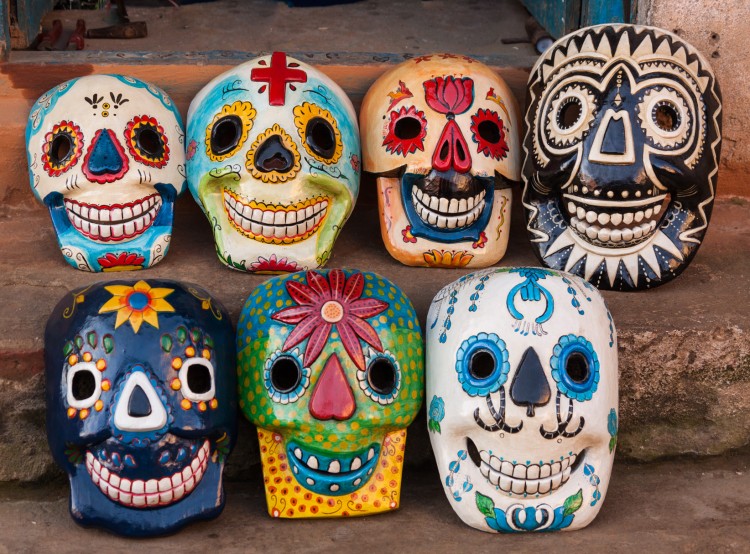
Our master carver Furba Lama and his lovely family designed a new collection of colorful and unique masks inspired to the Mexican Skulls Masks tradition.
Traditional Mexican Skull masks have their origins in the pre Hispanic period.
The depiction of death in pre Hispanic Mexico was not fearful but rather part of life.
Skull masks represent death still, and can be basic white or with fanciful decorations. Some are serious and others are laughing.
As in here in Nepal and other shamanic cultures in many countries in the world, some masked characters represent abstract concepts such as time and the Seven Deadly Sins.
Check Master Furba Lama new collection of skulls masks inspired by the Mexican cult of the Dead.
The Fascinating History of Himalayan Masks
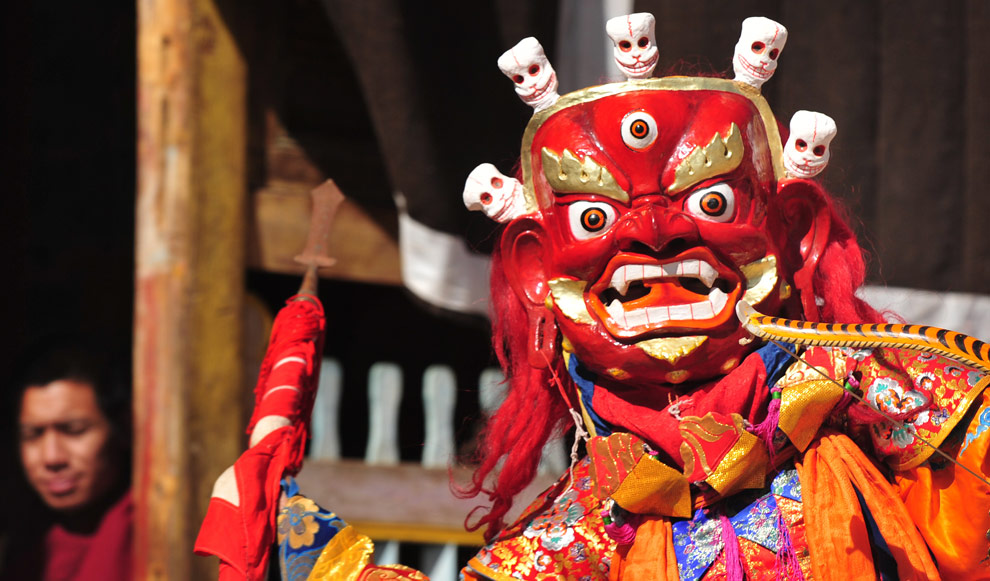
The Origin of Himalayan Masks Cult
Nepalese and Tibetan Masks are one of the symbols that better represent the culture and traditions of people living in the Himalayan region.
The ritual of wearing masks is very old and it comes from animists Himalayan tribes used to worship spirits of nature and guardians of these majestic mountains.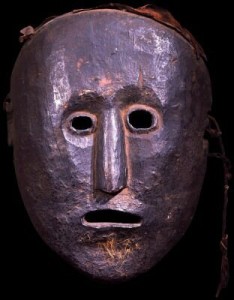
The Shamans of these tribes used to wear masks during rituals they use to perform in order to protect the village, heal diseases, practice exorcisms or other purposes.
Masks supposedly had a very important functions in the social life of these community as they were used also during theatrical representations and ceremonies dedicated to ancestors.
Hindu and Buddhist cultures, that became dominant in the surrounding regions, slowly replaced the myths of this shamanic cult.
However some of the old costumes survived.
Even spirits and demons were adopted by the Buddhist tradition and some of them became wrathful protectors of the Buddhist doctrine.
Padmasambhava and the Rise of Buddhism
Buddhism entered Tibet in the 7th century AD. According to Buddhist mythology the main actor of the transformation of Tibet was Padmasambhava. A famous Tantric Buddhist master from the Swat Valley (today Pakistan) and founder of the first Tibetan Buddhist monastery at Samye, south central Tibet.
Padmasambhava was called by the first Emperor of Tibet to defeat the ancient mountain gods of the old animist cult.
In accordance with the Tantric principle of redirecting negative forces toward spiritual awakening, Padmasambhava converted the wrathful deities, convincing them to become defenders of the new faith.
He is also said to have introduced at Samye Temple the so called Vajra Dance. A dance that takes place in a monastery where masked monks in deep meditation perform rituals that last for three days.
This practice continues today under the name “Cham” and it celebrate Padmasambhava’s conquest over the indigenous cult and their deities.
In Nepal this dance tradition takes a form known as Mani Rimdu: spectacular and colorful masked dances performed during different religious festival.
Iconography of Tibetan Masks
Considering the polytheist nature of both Hindu and Buddhist traditions the deities represented by Tibetan masks are numerous: Shiva, Bhairava, Ganesh, Mahakala, Garuda and Varahi are the most famous.
Some of the deities are depicted using animals like the Lion associated with Sima or the Tiger symbolizing Duma.
However the images must follow the rules and prescriptions described in old manuals and iconographic books.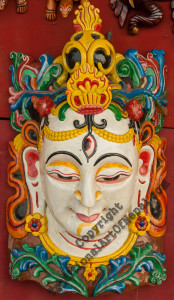
There are several books that set those guidelines, one of the earliest is from the first half of the 15th century. All the masks display a common element: the open third eye mark on the forehead.
The style of Tibetan and Nepalese Masks is characterized by elaborate pointed crowns with skulls, various head-bands, earrings and many other colorful elements.
These decorations not only reflect religious and symbolic aspects but also add a powerful imagery and a peculiar and fascinating look.
Follow traditionalartofnepal.com on WordPress.com
Special Offer: How About A Gift Of Art This Christmas?
Artworks are a unique, inspiring gift for Christmas and we believe our collection is a perfect fit also for Buddhists and Hindu willing to celebrate this grateful event.
Choose your favorite Mask, Mandala or Thangka painting and contact us writing “gift” on your message to receive a special discount.
Love and Blessing
Sunapati Thangka School and Shop
traditionalartofnepal.com
To reach the Christmas tree on time we recommend to order your artwork for overseas delivery no later than 10th December 2014.
Follow traditionalartofnepal.com on WordPress.com
How To Order
- Browse our catalog and choose your favorite design.
- Select your preferred size and quality to check the price.
- Click on “Product Inquiry” to send us a message and we will check if we the artwork is immediately available. If not we will make it for you.
- Use the cart page to calculate the shipping cost by selecting your country.
- Once we receive your order we will start creating the artwork according to your preferences and provide you with updates and images upon your request.
We strive to ensure a smooth shopping experience with our assistance. We also welcome commissions of custom designs of thangkas, masks and mandalas.
Shipping and Payments
We offer trusted shipping options to ensure your purchases arrive in perfect condition, and delivered in 5 to 10 working days worldwide. We accept PayPal, debit/credit cards and bank wire transfer services.
About Our Community
We live in Changunarayan, a UNESCO heritage site located on a forested hill overlooking Bhaktapur and the Kathmandu valley. You are welcome to visit our art school and meet our community of artists and artisans.
Learn More About Our Thangka School And Workshops
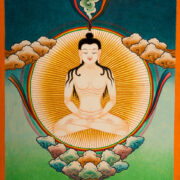 Tapihritsa Bon Yogi
Tapihritsa Bon Yogi 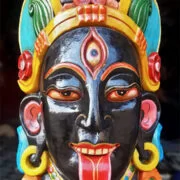 Goddess Kali Mask
Goddess Kali Mask 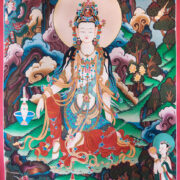 Quan Yin Thangka
Quan Yin Thangka 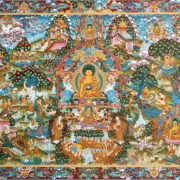 Life of Buddha Master Thangka
Life of Buddha Master Thangka 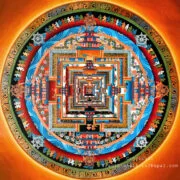 Kalachakra Mandala
Kalachakra Mandala 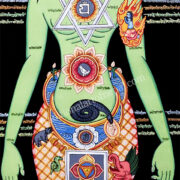 Chakraman Yogi
Chakraman Yogi 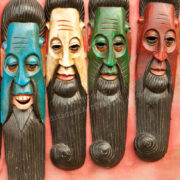 Sadhu Baba Masks
Sadhu Baba Masks 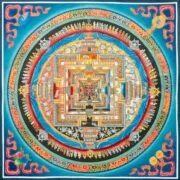 Kalachakra Mandala Auspicious Symbols
Kalachakra Mandala Auspicious Symbols 